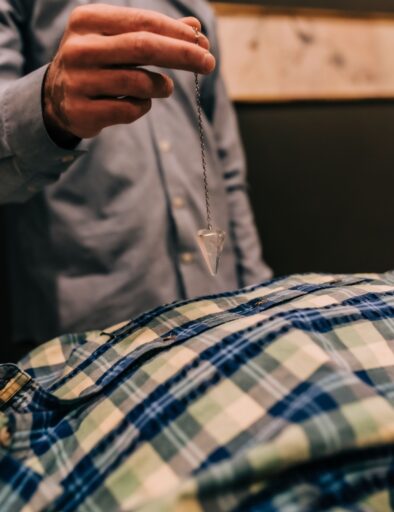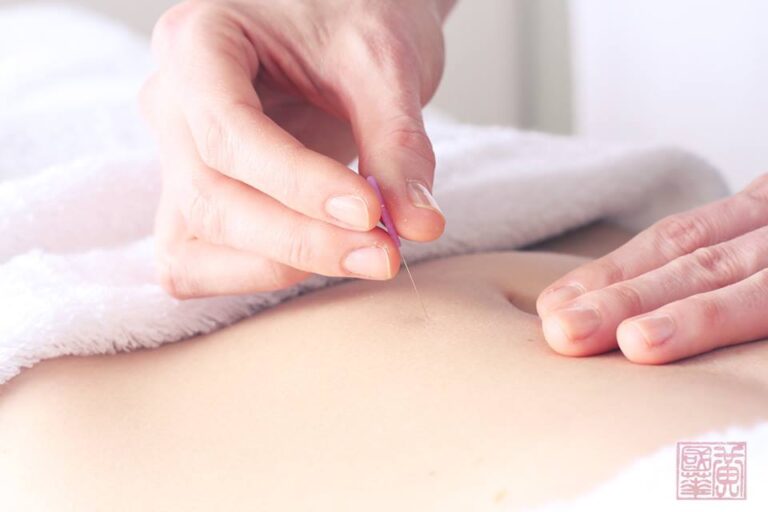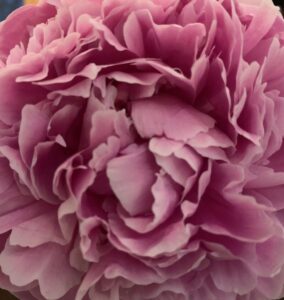Acupuncture
Esoteric Acupuncture and Treating the Spirit
Esoteric Acupuncture is a treatment strategy designed by Mikio Sankey, Ph.D., L.Ac. These treatments will balance the chakra system and have the ability to help one tap into their higher self and to their higher heart chambers allowing one access to raise their consciousness. The description below comes from Dr. Mikio Sankey’s book, “Esoteric Acupuncture: Gateway to Expanded Healing.” “Esoteric Acupuncture focuses on the utilization of traditional Chinese acupuncture theory, along with the Hindu Chakra System, Sacred Geometry, and the Qabalistic Tree of Life… As we evolve in our understanding of imbalances within our energy field, we must expand and evolve in our assessment of how to harmonize these imbalances… Rather than merely treating the signs and symptoms of a physical imbalance, ‘Higher Frequency Healing’ refers to balancing the more subtle frequencies outside of the dense physical body’s energy field… Another focus in Esoteric Acupuncture is to establish a strong and harmonious connection with the higher spiritual realms. When we are able to consciously connect to these higher energy fields, we begin to view our imbalances in a different light. The strengthening and harmonization process of the finer frequencies, and the conscious understanding of this process, will simultaneously align and initiate the frequencies of love to expand throughout our energy field, assisting us in our healing process on all levels.” Esoteric Acupuncture has been an integral treatment protocol assisting my patients in breaking through outdated protection mechanisms and old patterns that no longer serve their greater good. This process will bring wonderful changes into a person’s life, giving them access to their higher heart and insight to their puzzle piece in life.
What is Acupuncture?
Acupuncture is one of the main facets of Chinese Medicine, along with Chinese Herbal therapy, tui na (massage), dietary advice, and lifestyle recommendations. There are 8 extraordinary meridians, 12 primary meridians, and 361 traditional acupuncture points. Through stimulation of these meridians and acupuncture points with stainless steel, one time use needles, we can initiate a self-regulating mechanism (SRM) in our bodies. Every acupuncture point in the body has multiple functions and once stimulated, the body’s SRM initiates a balancing sequence. For example, ST36 is a major point in Chinese Medicine and has a profound effect on digestion. This point has the ability to slow or speed up peristalsis in the intestines. The body knows what is needed and the SRM will balance our systems. Some people find acupuncture treatments very relaxing while others have trouble getting needled. The sensation caused when an acupuncture needle connects with your body can feel like a “zing” at the point, or throughout the body. It is a very brief sensation, and after the initial zing, there is usually a dull ache, pressure or warm sensation at the acupuncture needle site. I do my best to tailor my treatments to the individual’s needs and comfort levels. It is imperative for the patient to feel comfortable on the acupuncture table.

Meridians
The 8 extra-ordinary meridians (Du, Ren, Chong, Dai, Yin Qiao, Yang Qiao, Yin Wei, and Yang Wei) act as reservoirs of excess Qi and Blood absorbed from the 12 primary meridians. These meridians behave very similar to water reservoirs collecting water from heavy rainfall or melting snow pack. At Healing Path Acupuncture, I use these meridians as the basis of our treatments. Activating these meridians with acupuncture needles signals a particular zone of the body (front, back, and sides) and accesses the root of a person’s Chinese diagnosis. Qi Gong masters and Qi Gong textbooks state the initial mitosis of a fertilized egg represent the extra-ordinary meridians. The 12 primary meridians are the main channels for the flow of Qi and Blood in the body. Each meridian has a hand and foot pair and are either Yin or Yang. The Yin meridians and organs (Heart, Spleen, Liver, Lung, Pericardium and Kidney) are the core of the body. These meridians are located on the inner aspect of the forearm and leg, and on the abdomen. The Yang meridians (Small Intestine, Large Intestine, Gall Bladder, Bladder, Stomach, and San Jiao) are paired with the Yin meridians and are located on the outer aspect of the forearms and legs, sides of the torso, back, face, and head. Often treatment strategies consist of tonifying a deficiency and/or dispersing excess. For example, if someone is super stressed out, frustrated, has trouble falling asleep from 11pm – 3am, wakes up and cannot fall back asleep, spots in their vision and temporal headaches, an acupuncturist would disperse or soothe the Liver energy and tonify the Blood with acupuncture and Chinese herbs.
Qi and Acupuncture Points
Qi is a somewhat difficult term to define. It is known as a person's life force. Cells need to communicate with each other, neurotransmitters need to know when to flush the body with hormones and muscles need to know when to fire. These and other functions of the body are regulated through the nervous system. But how does the nervous system get its "charge?" Qi can be thought of as the driving force behind the communication in the body. If a part of a wire is damaged, then that machine will not run properly. If there is a blockage in the body, usually being expressed in the form of pain, the qi will stagnate in the area blocked. Acupuncture releases the blockage and one becomes pain free. Acupuncture points are areas of the body where one can access a person’s Qi or electrical current. Needling an acupuncture point sends a pulse through the peripheral nervous system, to the central nervous system, then up the spine to the brain, back down the spine and returns to the sight of the needle. The immune system is alerted and fresh blood and T cells investigate the micro trauma created by needling. The slight surge created by needling an acupuncture point also initiates a self-regulating mechanism in the body that has not really been explored in Western Medicine. Studies are starting on this mechanism and hopefully soon we will have some answers and clues into the power of the bodies healing abilities. Needling an acupuncture site is similar to charging an electrical capacitor. Imagine if one were able to stick a needle in an electrical outlet, and instead of having a negative effect, like shocking yourself, one would be able to get more power to their house and have it run more efficiently.

Treating Pain With Acupuncture
Acupuncture has an amazing ability to initiate a self-regulating mechanism in your body to help you overcome acute and chronic pain patterns. Along with an acupuncture pattern, I will use motor points, trigger points or e-stim on the local area to help ease the pain. A motor point defined by Matt Callison is, “the entrance of the motor nerve into the muscle, is defined as the most electrically excitable area containing the greatest concentration of nerve endings. Found in the central aspect of the muscle fibers, the motor point’s location provides the best advantage for mechanical efficiency to affect the entire muscle. Having the greatest influence of electrical activity within the muscle, a motor point’s tenderness reveals a disruption in electrical activity. Acute trauma, repetitive and overuse activities, or muscle imbalance resulting in motor point tenderness will either precipitate or result in muscle spindle dysfunction. It is for this reason that selection of the motor point, the most tender point in the muscle when pathology exists, is imperative in the treatment of all musculoskeletal injuries.” According to Janet Travell, M.D., and David G. Simons, M.D., trigger points are broken into two categories. One category is an, “Active Myofascial Trigger Point that causes a clinical pain complaint. It is always tender, prevents full lengthening of the muscle, weakens the muscle, refers a patient-recognized pain on direct compression, mediates a local twitch response of muscle fibers when adequately stimulated, and, when compression within the patient’s pain tolerance, produces referred motor phenomena and often autonomic phenomena, generally in its pain reference zone, and causes tenderness in the pain reference zone.” The other type, “Latent Myofascial Trigger Point is clinically quiescent with respect to spontaneous pain; it is painful only when palpated. A latent trigger point may have all the other clinical characteristics of an active trigger point and always has a taut band that increases muscle tension and restricts range of motion.” E-Stim is electrical stimulation applied to acupuncture needles inserted into an acupuncture point designed to disperse excess pain patterns in muscle tissues, and tonify deficiency patterns in organ systems.

Emotional Issues
While acupuncture has the ability to aid one in gaining clarity around emotional issues, I encourage my clients to have a well rounded support system to help them deal with their mental health. Having a mental health professional to talk to fits in well with an emotional focused acupuncture treatment. One can receive acupuncture and process what was discussed during a mental health session. Acupuncture can also calm down the nervous system, reduce anxiety, alleviate depression symptoms, and aid in gaining clarity around how to break the chains of emotional blockages. The 12 primary meridians are the main channels for the flow of Qi and Blood in the body. Each meridian has a hand and foot pair and are either Yin or Yang. The Yin meridians and organs (Heart, Spleen, Liver, Lung, Pericardium and Kidney) are the core of the body. These meridians are located on the inner aspect of the forearm and leg, and on the abdomen. The Yang meridians (Small Intestine, Large Intestine, Gall Bladder, Bladder, Stomach, and San Jiao) are paired with the Yin meridians and are located on the outer aspect of the forearms and legs, sides of the torso, back, face, and head. Often treatment strategies consist of tonifying a deficiency and/or dispersing excess. For example, if someone is super stressed out, frustrated, has trouble falling asleep from 11pm – 3am, wakes up and cannot fall back asleep, spots in their vision and temporal headaches, an acupuncturist would disperse or soothe the Liver energy and tonify the Blood with acupuncture and Chinese herbs.
Fertility
Dealing with fertility requires a multifactorial treatment protocol of acupuncture, Chinese Herbs and charting your basal body temperature. As we begin a course of fertility treatments, I will ask you to take your basal body temperature every morning before getting out of bed and chart those temperatures. After a month of charting, we will go over your temperature graph and adjust the treatment protocol to fit your needs. Ideally, acupuncture should be performed weekly for fertility and we will go over what Chinese herbal formula would best suit your situation. Chinese Medicine is very effective in treating fertility and I highly recommend treating both partners to yield the best outcome.


Digestive Problems
Digestive issues plague many people in our society. There has been an increase in food sensitivities, ulcerative colitis, crohn’s disease, autoimmune diseases, and gut dysbiosis within the population. In order to help alleviate symptoms associated with these issues mentioned above, we must diversify our microbiome, cleanse candida, and in some cases cleanse down to the parasite level. We can support your body with a Chinese herbal formula to treat the root and branch of the issue. Another tool to help with gut health is taking an ALCAT food sensitivity test to determine the delayed hypersensitivity immune response to different foods. The most imperative and often more difficult changes in healing the gut are adjustments to our lifestyle and making informed food choices.